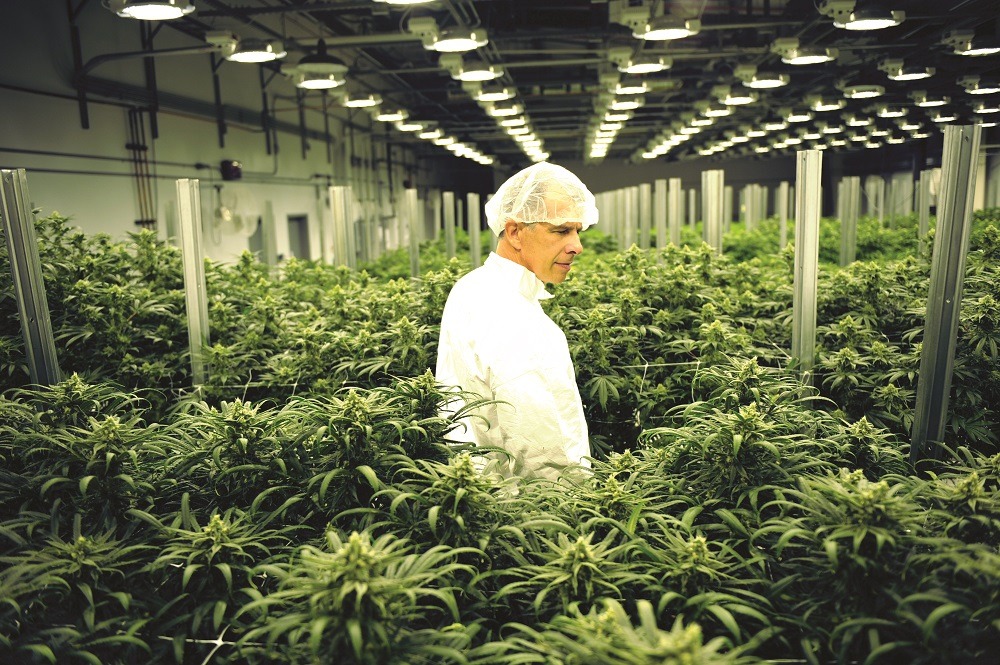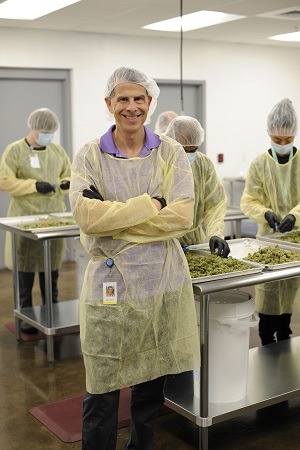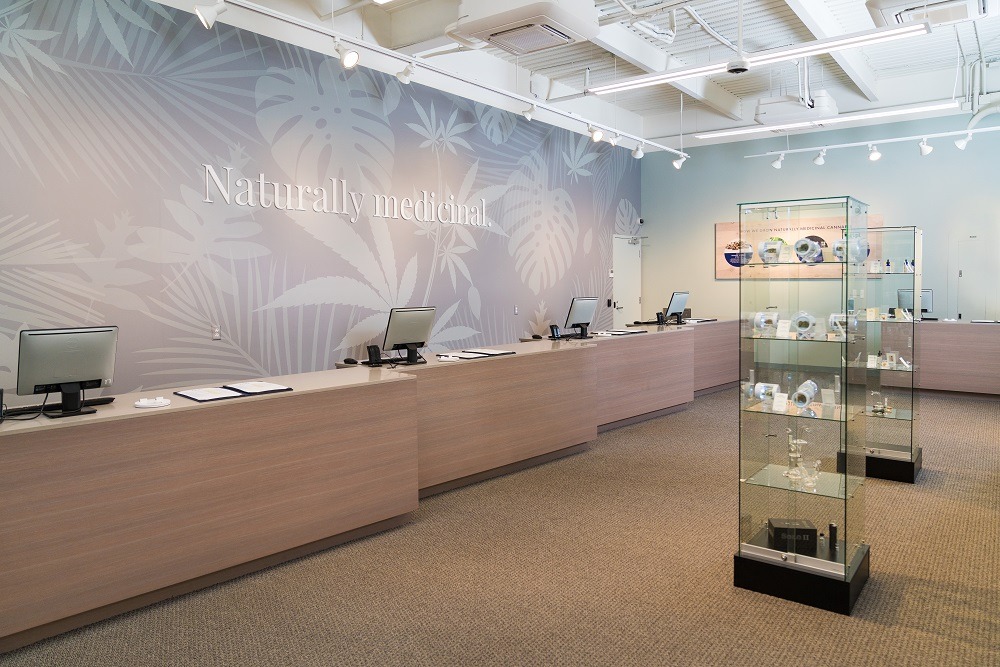In the early stages of Hawaii’s dispensary program, there was a race among the licensees. It seemed everybody wanted to be the first to open their doors.
Everybody, that is, except Noa Botanicals CEO Brian Goldstein.
“Some of my investors were really pushing us to be first to open,” Goldstein recalls. “I pushed back and said no, I don’t want to be first to open; I want to be second. There are a whole field of land mines ahead of us, and I’m going to let the other guys step on them. I’ll follow in their footsteps.”
Goldstein’s patience paid off, as he was able to focus on getting the details just right, rather than getting them good enough. The company’s Honolulu dispensary received a flood of positive reviews when it first opened in October 2017, but there was one interaction in particular that Goldstein remembers vividly.
While checking in patients at the front desk, he noticed as a woman walked into the retail space, her attention rapt in a conversation on her cell phone. She finished the call after a moment and hung up the phone, looking around the dispensary and noticing her surroundings for the first time.
“Woooowwww!” she exclaimed, drawing out the single syllable in amazement. “This is incredible!”
It was exactly the type of response Goldstein hoped to hear.
“I knew we nailed it at that moment,” he says.

Noa CEO Brian Goldstein has worked just about every position within the company.
Subtlety in Design
Noa Botanicals recently opened its second dispensary on the island of Oahu. The Kaneohe location builds on the same design theme that helped make the Honolulu shop a success.
Goldstein says people have described Noa as a cross between a really comfortable doctor’s office and a spa. It’s open and spacious. It has tall ceilings and a soft color palette. There’s no green, no digital screens, no explicit marijuana imagery. It’s the subtle touches that give Noa its ambiance.
“We use a lot of wood and have leather-bound, oversized menus that look and feel just like a fine wine list,” Goldstein says. “We use appellations and wine terms to describe the nose and flavor, really striving to be somewhat familiar.”
To pinpoint his likes and dislikes, Goldstein visited dozens of dispensaries in different areas on the mainland, including storefronts in Arizona, Nevada and Washington.
He wanted to create a retail space that was quintessentially Hawaiian, without being over the top.
“It’s not imagery of surfers and stuff like that,” he says. “It’s very subtle, very low-key.”
For many patients at Noa, it’s the first cannabis dispensary they’ve ever been to. Goldstein wanted it to “feel somewhat familiar and comfortable and totally non-threatening.”

Goldstein spent 25 years in the tech industry before getting into the cannabis field.
The Hawaiian Market
Hawaiian cannabis businesses got a welcome boost in March as the state enacted a reciprocity program to allow out-of-state patients to shop at state-licensed dispensaries.
In 2018, Hawaii dispensaries sold 1,569 pounds of cannabis for $12.6 million, according to state Department of Health statistics. As of February, the state had 24,521 registered patients.
Although Hawaii legalized medical marijuana through its state Legislature in 2000, it took 17 years before dispensaries were finally allowed to open. After a competitive application process, the state granted eight vertically integrated licenses for cannabis operations.
Now that dispensaries are up and running, patient numbers have been growing slowly but steadily, at a rate of about 2% monthly, but the relatively limited patient base remains a challenge for the burgeoning program. (The state has actually had a cannabis patient registry in place for about 19 years; however, the first 15 years were managed by a law enforcement agency, which, as Goldstein points out, is not conducive to building enrollment.)
Self-Reliance
Aside from the relatively small local patient base, one of the big challenges of Hawaii’s medical marijuana market is the vertical integration mandate. State-licensed dispensaries can only sell cannabis they’ve grown and cannabis products they’ve manufactured. This forces each business to be completely self-reliant.
The benefit of this model, Goldstein says, is that each company can control the supply chain and ensure product quality. The challenge is predicting the market and making sure to have just the right amount of inventory on hand.
“It’s not like we can call up a distributor and say, ‘Send me 10 pounds of Strawberry Tahoe,’” Goldstein says.
Flower strains are a glaring example of how difficult it is to manage inventory.
When Noa first opened, people constantly asked about CBD. It took about three months before the company finally had a high-CBD strain on its shelves. At about 8% THC and 8% CBD, it was a perfect 1:1 balance. It looked great. It smelled great. And people had been clamoring for it. Yet … it just sat on the shelves. When it came time to buy, people still gravitated toward higher THC products.
“People say they want it, but then we don’t sell much of it, so it’s hard to justify producing much,” Goldstein says.
However, the exact opposite happened with a strain called Secret Weapon No. 2.
“Within three days it blew up on Instagram, and we sold out of it in five days,” Goldstein says. “It illustrated for me, the power of social media and driving awareness.”
To this day, Secret Weapon No. 2 is one of the company’s top-selling strains.

Leather-bound product catalogs are reminiscent of restaurant wine lists.
From Tech to Cannabis
Before getting into the cannabis business, Goldstein spent 25 years in the tech industry, including 15 working in Silicon Valley’s software industry. During his career, he’s started companies from scratch; he’s raised about $70 million in private equity; he’s helped take a company public; he’s done a company turnaround, a merger, a sale, an acquisition.
Seventeen years ago, he and his wife moved to Hawaii, which can be a challenging place to make a living.
“I’ve been fortunate to find a path here, because I’m not in real estate or the hospitality business,” he says. “Real estate, hospitality and the military are really the three legs of the stool here, economically.”
When he first moved to Hawaii, he was hired to turn around a marine biotechnology company. Goldstein helped develop a genetic breeding program and eventually sold the company to a multibillion-dollar Indonesian conglomerate.
This was his first experience with breeding, a skill that has now crossed over into his work in cannabis. Noa Botanicals has an exclusive collaborative research and development agreement with the Hawaii Agriculture Research Center, a nonprofit trade association that originally focused on sugar research. The 124-year-old organization has expanded its scope to include agricultural breeding and research for papaya, cacao and coffee, among other crops.
The tropical climate of Hawaii, with upwards of 90% humidity on a regular basis, proves a challenging environment with the state’s stringent testing regulations. Goldstein says a local testing lab has seen about 90% of black market cannabis test positive for pesticides.
“It’s really hard to grow here without using chemicals,” he says. “If you’re faced with losing your crop or spending $50 and spraying it, what are you going to do?”
Goldstein says Noa has never failed a pesticide test; rather than relying on chemicals, the company is hyper-focused on controlling the environment within its state-of-the-art indoor grow.
“We spend a ton of money on energy and propane and dehumidification,” he says. “It’s just incredible what we spend on a monthly basis to keep that relative humidity and make sure our personnel follow our standard operating procedures when they come into the facility.”

An adult-use program in Hawaii might be inevitable, though the state Legislature failed to pass the most recent proposal.
The Future
Although Hawaii has only about 1.5 million residents, the tourist market of nearly 10 million annual visitors, combined with the high barrier to entry and limited licenses, make it an attractive market for companies looking to expand.
“We’re getting a fair number of inquiries from multi-state operators interested in getting a foothold in the Hawaii market,” Goldstein says.
In March, a bill that would have legalized recreational marijuana stalled in the state Legislature, but Goldstein believes it’s only a matter of time before the state adopts a framework for adult-use sales.
“It’s inevitable,” he says. “The horse has left the barn.”
The only question is when.
Although Hawaii is politically progressive, it’s traditionally a socially conservative state. However, the smooth rollout of the state’s dispensary program has helped alleviate some residents’ concerns. Just as in other states that have legalized marijuana, none of the fear-mongering prophecies from cannabis opponents have materialized. The dispensaries haven’t had problems with social issues or the neighborhoods in which they’re located. Negative consequences haven’t been recorded with children.
“The sky didn’t fall when the first dispensaries opened,” Goldstein says.
Noa is a Hawaiian word meaning “to be released from restriction” or “to be freed from taboo.” It’s a fitting description of the company’s philosophy.
“It’s just a plant,” Goldstein says. “It’s just a natural wellness product, and it’s interesting to see how that’s slowly seeping across the society.”

